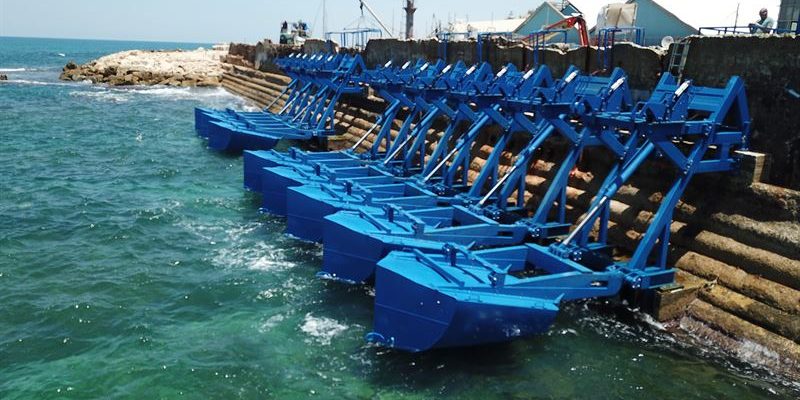Waveform has new meaning with Surjaa
Enjoy the best design and function combined together
Wave energy is produced by the motion of ocean waves, which are caused by the wind blowing across the surface of the ocean. As waves travel across the water, they carry a significant amount of energy. Wave energy conversion devices partnered for Surjaa are designed to capture this energy and convert it into usable electrical power.

Wave Capture Mechanism
Small wave energy devices utilize various mechanisms to capture the energy of ocean waves and convert it into usable electricity. These mechanisms typically include oscillating water columns, point absorbers, attenuators, and oscillating wave surge converters. Each type of device operates differently, but they all aim to harness the motion of waves and convert it into mechanical or hydraulic energy, which is then transformed into electrical power through generators or other power conversion systems.
Modularity and Scalability
Small wave energy devices are often designed to be modular and scalable, allowing for easy deployment in a range of settings and environments. Modular devices can be assembled and installed in arrays or clusters, enabling developers to customize the size and configuration of wave energy installations based on site conditions, energy demand, and project objectives. Scalability also facilitates incremental deployment and expansion of wave energy projects as needed, providing flexibility and adaptability to changing requirements and opportunities.
Environmental Considerations
As with any renewable energy technology, small wave energy devices must consider environmental impacts and ecological concerns during design, deployment, and operation. Critical aspects include minimizing disturbance to marine ecosystems, mitigating potential negative effects on marine life, and ensuring the safety and navigability of coastal waters. Developers of small wave energy devices often conduct environmental impact assessments and engage with stakeholders to address concerns and implement mitigation measures to safeguard marine habitats and biodiversity.
tidal and wave Point absorbers
These devices are typically small floating structures that move up and down with the motion of the waves. They contain hydraulic pumps or other mechanisms that convert the mechanical energy of the waves into electrical power.
Oscillating water columns (OWCs)
Surjaa is collaborating and testing OWC devices that use the rise and fall of waves to push air in and out of a chamber, driving a turbine which in tandem with a generator produces electricity.
Attenuators and Overtopping devices
These long, segmented devices are anchored to the seabed and float on the surface of the water. As waves pass through the segments, they cause them to flex and move, generating electricity through mechanical or hydraulic systems.
Wave energy has several advantages as a renewable energy source. It is abundant, predictable, and has a high energy density, meaning that relatively small areas of ocean can produce significant amounts of electricity. Additionally, wave energy has the potential to provide a steady and reliable source of power, unlike some other forms of renewable energy, such as wind or solar, which can be intermittent.
However, there are also challenges associated with wave energy, including the high costs of technology development and deployment, as well as potential environmental impacts on marine ecosystems and coastal communities.
